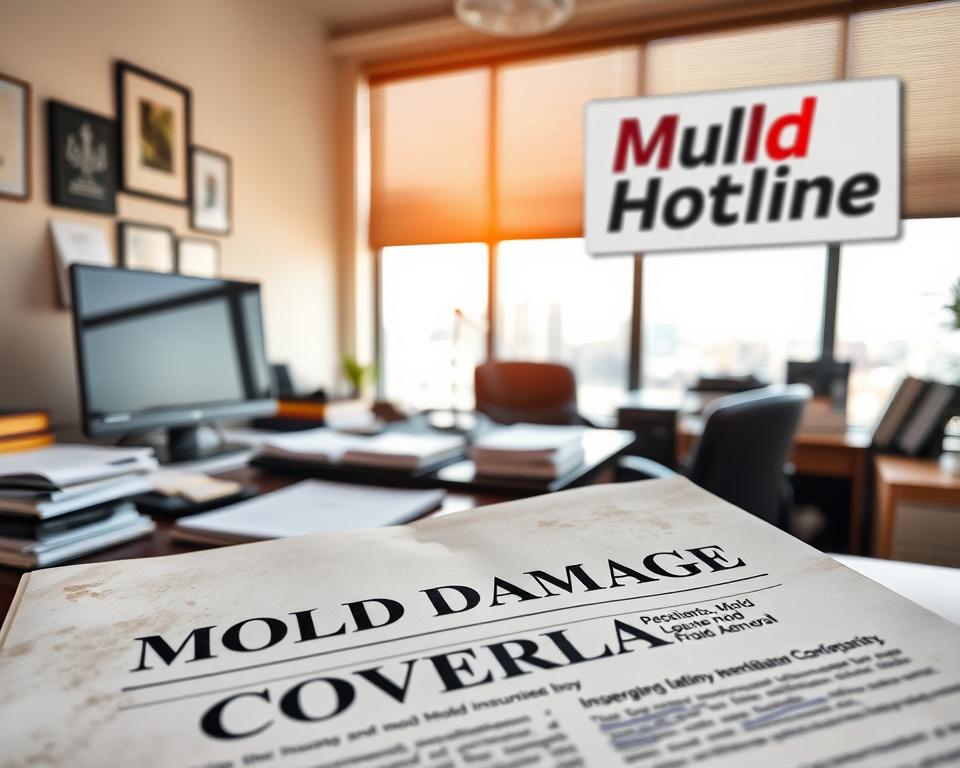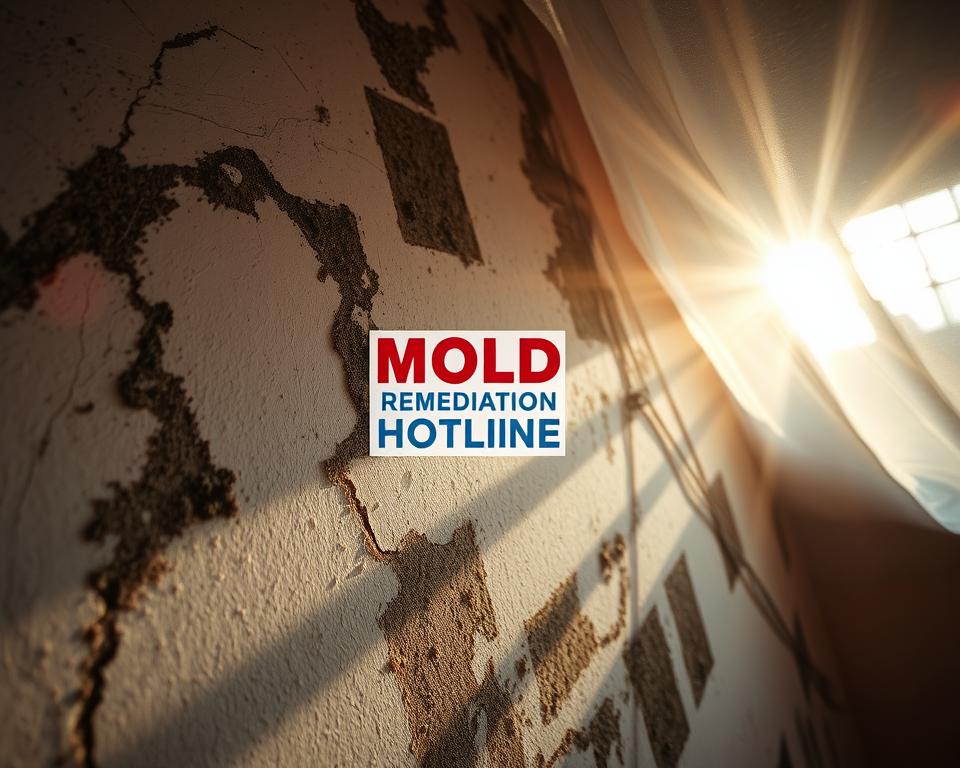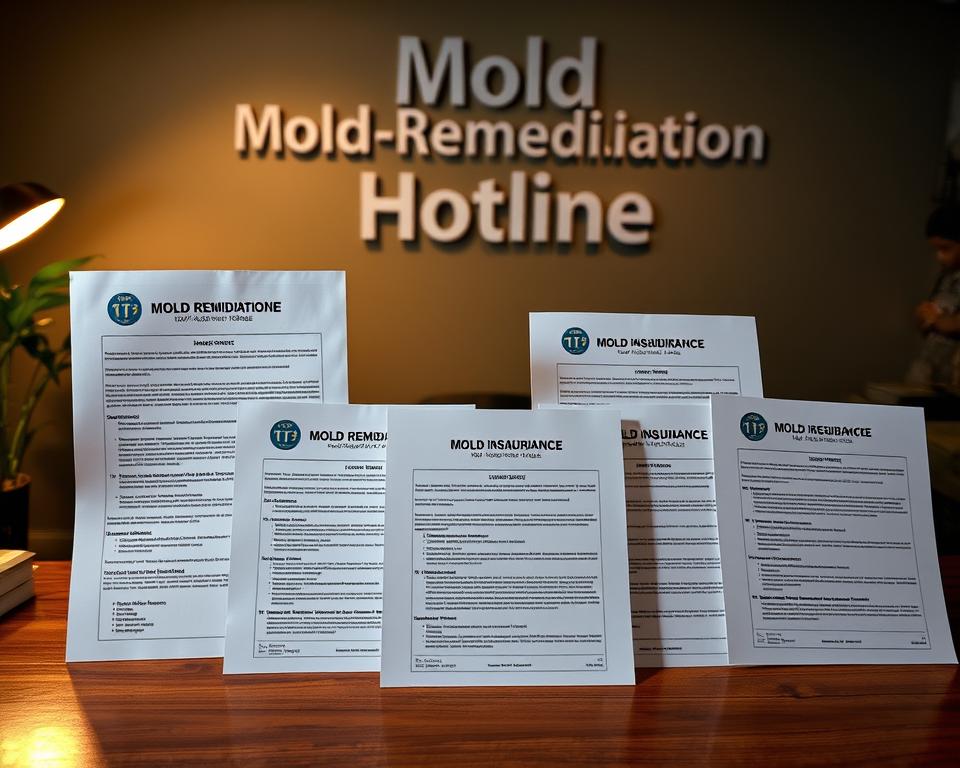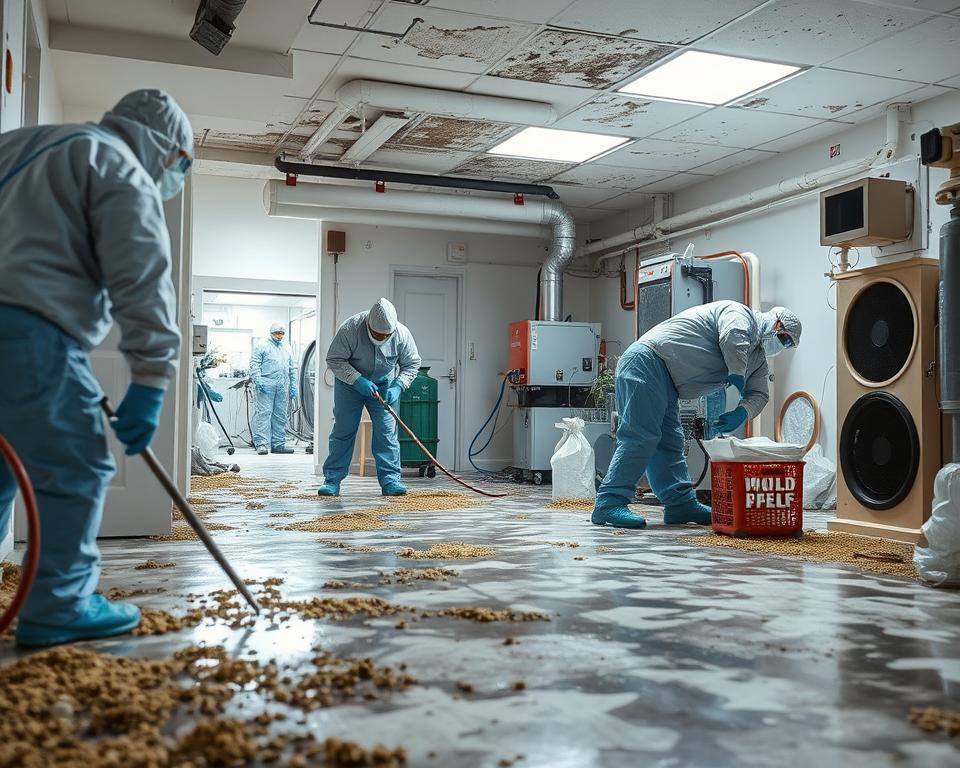Mold infestations can be a significant concern for homeowners, posing potential health risks and leading to costly repairs. The complexity of insurance coverage for mold damage often leaves property owners uncertain about their policy’s protection.
Typically, a standard home insurance policy covers mold if it results from a covered peril, such as a sudden water leak. Understanding which mold removal services are approved by insurance providers is crucial for ensuring your remediation costs are covered.
For immediate assistance with insurance-approved mold remediation options, call our expert consultation line at 332-220-0303.
Key Takeaways
- Mold infestations require prompt professional intervention to prevent structural damage and health complications.
- Insurance coverage for mold varies significantly between policies.
- Standard policies offer limited protection unless the mold resulted from a covered peril.
- Professional mold remediation services can be costly, making insurance coverage critical.
- Understanding your policy’s coverage is essential for making informed decisions.
Understanding Mold Damage and Insurance Coverage
Understanding the relationship between mold damage and insurance coverage is vital for homeowners. Mold growth can lead to significant expenses for remediation, and insurance coverage can play a crucial role in mitigating these costs.

Common Causes of Mold Growth in Homes
Mold growth in homes is often the result of moisture problems. Common causes include:
- Hidden leaks in plumbing systems
- Roof defects
- Poor ventilation in bathrooms and kitchens
- Flooding events
These issues can lead to mold growth if not addressed promptly. It’s essential for homeowners to be aware of these potential problems to prevent mold damage.
Health Risks Associated with Mold Exposure
Exposure to mold can have serious health implications, ranging from minor allergic reactions to severe respiratory conditions. Individuals with pre-existing health conditions or compromised immune systems are particularly vulnerable. The potential health risks associated with mold exposure make it crucial to address mold growth promptly.
Homeowners should be aware that visible mold growth often indicates a larger hidden problem that may have been developing for weeks or months behind walls or under flooring. Understanding the relationship between water intrusion and mold growth is essential for both prevention and determining potential insurance coverage.
When Does Insurance Cover Mold Damage?
The question of whether insurance covers mold damage depends on several factors, including the cause of the mold and the specifics of your insurance policy. Home insurance can cover mold, but it’s not a straightforward process.
Covered Perils: Sudden and Accidental Water Damage
Insurance policies typically cover mold damage when it results from sudden and accidental water damage events that are already covered under the policy. For instance, if mold grows as a result of a burst pipe or water heater failure, it is usually covered. Similarly, water used to extinguish a fire can also lead to mold growth that is covered under the policy.

Excluded Scenarios: Maintenance Issues and Flooding
Most policies explicitly exclude mold damage resulting from long-term maintenance issues, such as ongoing leaks, high humidity, or poor ventilation. Additionally, flooding events and the resulting mold damage are almost universally excluded from standard homeowners policies, requiring separate flood insurance for protection.
Coverage Limits for Mold Remediation
Insurance companies typically impose specific coverage limits for mold remediation, often ranging from $1,000 to $10,000, regardless of the actual remediation costs. Policyholders should carefully review their coverage limits, as professional remediation services can easily exceed these amounts. Some insurance providers offer additional endorsements or riders that can increase mold coverage limits for an additional premium.
| Scenario | Coverage |
|---|---|
| Sudden and accidental water damage | Usually covered |
| Maintenance issues (ongoing leaks, high humidity) | Generally excluded |
| Flooding events | Excluded; requires separate flood insurance |
Understanding these nuances is crucial for homeowners to navigate their insurance policies effectively and ensure they have adequate coverage in case of mold damage.
Types of Insurance Policies for Mold Remediation
Homeowners facing mold issues need to navigate various insurance policies to find adequate coverage. Understanding the nuances of these policies is crucial for making informed decisions about mold remediation.
Standard Homeowners Insurance Policies
Standard homeowners insurance policies typically offer limited coverage for mold damage. Most basic policies include mold coverage only when it results from a covered peril, such as sudden and accidental water damage. However, the extent of coverage can vary significantly between insurance providers.
- Coverage is often limited to specific scenarios, leaving gaps in protection.
- Policyholders may face caps on the amount that can be claimed for mold remediation.
Specialized Mold Coverage and Endorsements
For more comprehensive protection, homeowners can consider specialized mold endorsements or standalone mold policies. These options can provide broader coverage, including scenarios that would otherwise be excluded.
- Specialized endorsements can be added to standard policies to expand coverage limits.
- Some insurers offer standalone mold policies for properties in high-risk areas or with previous mold issues.
When evaluating insurance options, it’s essential to consider factors such as the property’s age, location, and history of water damage or mold problems. The cost of additional mold coverage should be weighed against the potential financial risk of paying for remediation out-of-pocket.
| Policy Type | Coverage Details | Cost Considerations |
|---|---|---|
| Standard Homeowners Insurance | Limited coverage for mold damage resulting from covered perils | Included in standard premium |
| Specialized Mold Endorsement | Broader coverage for mold remediation, including additional scenarios | Additional premium required |
| Standalone Mold Policy | Comprehensive coverage for properties in high-risk areas or with previous mold issues | Separate premium; may require property inspections or mold testing |

Understanding the different types of insurance policies available for mold remediation can help homeowners make informed decisions and safeguard their properties effectively.
Finding Insurance-Approved Mold Removal Companies

When dealing with mold damage, identifying insurance-approved mold removal companies is crucial for a smooth claims process. Most insurance companies maintain a network of preferred mold remediation vendors who meet their quality standards and agree to their pricing structure.
Working with Your Insurance Provider’s Preferred Vendors
Working with an insurance-approved mold removal company often streamlines the claims process and reduces the likelihood of coverage disputes. It’s essential to contact your insurance provider to find out if they have a list of preferred vendors for mold remediation services.
Verifying a Company’s Insurance Credentials
When selecting a mold remediation service, verify their licensing, certification, insurance, and experience with insurance claims to ensure they meet industry standards. Professional mold remediation companies should be willing to work directly with your insurance provider, handling documentation and evidence collection to support your claim.
Questions to Ask Before Hiring a Mold Remediation Service
Before hiring any remediation service, request detailed information about their assessment process, remediation methods, containment procedures, and post-remediation verification. Insurance-approved companies typically follow industry standards established by organizations such as the Institute of Inspection, Cleaning and Restoration Certification (IICRC).
If you suspect mold damage in your home, it is vital to act quickly. Time is of the essence when dealing with mold to prevent further damage and potential health risks. For immediate assistance finding qualified, insurance-approved mold removal professionals in your area, call our consultation line at 332-220-0303.
Filing a Successful Mold Insurance Claim
Filing a successful mold insurance claim requires a strategic approach, thorough documentation, and a clear understanding of your policy’s coverage. When dealing with mold damage, it’s crucial to navigate the insurance claims process effectively to ensure that you receive the necessary coverage for remediation.
Documentation and Evidence Required
To substantiate your mold insurance claim, you need to provide comprehensive documentation of the damage. This includes detailed photographs, videos, and written descriptions of all affected areas. Additionally, insurance companies typically require evidence establishing the cause of the mold, such as moisture readings and professional assessment reports.
- Document the damage with detailed notes and photographs.
- Obtain professional assessments to determine the cause and extent of the mold damage.
- Gather evidence, including moisture readings and humidity levels.

Steps to Submit Your Claim
When submitting a mold insurance claim, it’s essential to provide a comprehensive timeline documenting when the water damage occurred, when mold was discovered, and all steps taken to mitigate further damage. Most insurers have specific timeframes for reporting mold damage, making it crucial to notify your insurance company immediately upon discovering a potential problem.
- Notify your insurance company promptly upon discovering mold damage.
- Provide a detailed timeline of the damage and mitigation efforts.
- Submit all required documentation and evidence to support your claim.
Handling Claim Denials and Disputes
If your mold insurance claim is denied, request a detailed written explanation citing the specific policy language that supports the denial decision. Many claim denials can be successfully appealed by providing additional documentation or obtaining independent professional assessments.
- Request a written explanation for the claim denial.
- Appeal the denial by providing additional documentation or independent assessments.
- Consider consulting with a public adjuster or attorney specializing in property insurance claims.
The Mold Remediation Process: What to Expect
The mold remediation process involves several key steps to effectively remove mold and prevent future growth. Professional mold remediation services begin with a comprehensive assessment to identify the extent of visible and hidden mold damage throughout the property.
Initial Assessment and Testing
The initial assessment may include air quality sampling, surface sampling, and moisture mapping to determine the types of mold present and the scope of the contamination. This step is crucial in understanding the extent of the mold growth and planning the remediation process.
Containment and Removal Procedures
Proper containment procedures are essential to prevent cross-contamination during the removal process. This typically involves physical barriers and negative air pressure systems. The removal phase includes eliminating contaminated materials that cannot be salvaged, cleaning salvageable surfaces, and addressing the underlying water damage or moisture problem.
Post-Remediation Verification
After the removal process, post-remediation verification testing provides documentation that mold levels have been reduced to normal levels, which is often required by insurance companies to close a claim.  Professional remediation companies use specialized equipment to ensure thorough mold removal.
Professional remediation companies use specialized equipment to ensure thorough mold removal.
The complete remediation process typically takes 3-7 days for an average-sized project, though extensive damage may require more time for proper remediation and repairs.
Conclusion: Protecting Your Home and Health
Effective mold damage management involves a combination of prevention, insurance knowledge, and prompt action. To protect your home and health, it’s essential to understand your insurance coverage options and take proactive measures against mold growth.
Regular maintenance is key to preventing mold damage. This includes prompt repairs of water leaks, ensuring proper ventilation, and monitoring humidity levels. By taking these steps, you can significantly reduce the risk of mold growth.
For those times when mold problems do occur, working with insurance-approved remediation companies can improve your chances of a successful claim and thorough remediation. It’s also crucial to review your insurance policies annually to understand your coverage limits and exclusions related to mold damage.
For personalized guidance on insurance coverage for mold remediation or to find approved mold removal companies in your area, call our expert consultation line at 332-220-0303. Taking a proactive approach to both mold prevention and insurance coverage will help protect your property value and your family’s health.
